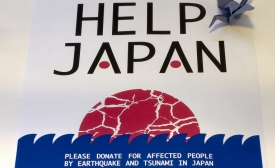public diplomacy

The mission of public diplomacy is generally described as seeking to “understand, engage, inform and influence” foreign publics and elites in support of national policy objectives. Public diplomacy has been practiced, in one form or another, for a long time...
While Japan struggles to recover from the shocking devastation of the March 11, 2011 (3/11) earthquake and tsunami, Japanese public diplomacy also struggles to recover from the damage. Tourism campaigns, especially those with a focus of rehabilitating the image of the Japanese are critical, benefiting from support of non-Japanese artists.
"It is the first time that this group of stars meets. It is a project of Cuban music and specifically of son", said Betancourt at a news conference...The idea of presenting Cuban traditional music from the 1940s and 1950s came from Dominique Roland, director of the Center for Arts, and was materialized thanks to Musicalia of Cuba and producer Carmen Mayans.

“Hajj: Journey to the Heart of Islam,” the exhibition at the British Museum that has drawn more than 80,000 visitors since it opened in late January is a remarkable achievement.

While Japan struggled to recover from the 3/11 earthquake and tsunami, Japanese PD also struggled to recover from the damage.








